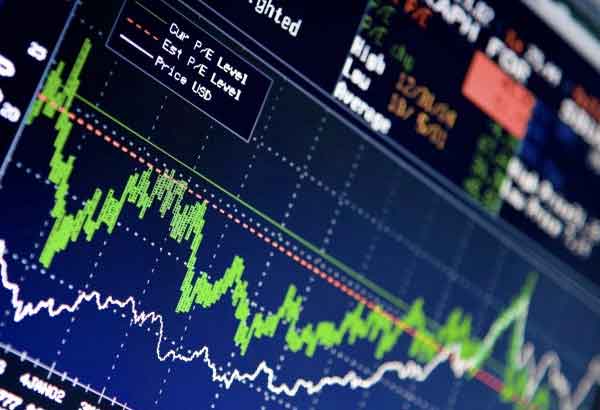Philippines: GDP grows at better-than-expected 6.9% in Q3
MANILA, Philippines — The domestic economy expanded at a better-than-expected pace of 6.9 percent in the third quarter, likely the second fastest in Asia during the period, the National Economic and Development Authority (NEDA) said yesterday.
Growth in gross domestic product (GDP) – the total value of goods and services produced during the period – beat the median market expectations of 6.6 percent as well as the revised 6.7 percent expansion in the second quarter. It was, however, slightly lower than the seven percent growth in the third quarter of 2016.
“We are likely to rank second in Asia this quarter, next to Vietnam’s 7.5 percent and ahead of China’s 6.8 percent and Indonesia’s 5.1 percent,” Socioeconomic Planning Secretary and NEDA chief Ernesto Pernia said in a briefing.
With a year-to-date average growth of 6.7 percent, Pernia said the government is on track to meeting the full-year target range of 6.5 percent to 7.5 percent growth for 2017.
He attributed the strong growth during the quarter to the sustained growth in exports and higher public spending which, in turn, powered the manufacturing and services subsector.
Malacanang welcomed yesterday the higher-than-expected growth figure, attributing it to the Duterte government’s reform programs.
“It’s stability that brings about predictability, which brings up business, investors’ confidence. And that can be attributed to President Duterte’s administration,” Presidential Spokesman Harry Roque said in a press briefing.
Finance Secretary Carlos Dominguez also expressed confidence the economy would grow faster in the succeeding quarters amid the government’s ramped up infrastructure spending.
“Expect a more riveting growth narrative in the fourth quarter and onwards as the Duterte administration shifts to higher gear its unparalleled investment and stimulus program on the strength of the government’s greater absorptive capacity and its resolve to advance its Build Build Build infra program as the main driver of the economy,” he said.
“Notwithstanding the continued political noise and the terrorist activity in Marawi, which President Duterte had decisively addressed, the economy managed to perform well in the third quarter as the government posted a double-digit increase in public investments and pursued initiatives to further improve fiscal health and boost investor sentiment,” Dominguez said.
On the demand side, public consumption was up 8.3 percent in the third quarter from 7.1 percent in the second quarter and 3.1 percent in the third quarter of 2016 on account of the pay increase of civilian government employees and allowances of military and uniformed government personnel as well as increased hiring in the Department of Education.
“This is in line with the government’s commitment to dependable and timely delivery of public services,’ said Pernia.
The government’s infrastructure development program is also expected to ramp up public spending in the coming months as more projects are expected to break ground within next year.
Household consumption, on the other hand, slowed down to 4.5 percent in the third quarter from 5.9 percent in the second quarter and 7.2 percent in the third quarter of 2016. Pernia attributed this to rising prices of fuel, electricity and food.
“But we expect a pickup in household consumption in the last quarter of the year due to the holiday season,” he said.
The end of the unrest in Marawi City is also a welcome development for the economy as the reconstruction efforts would provide a boost to the local economy, helping people get back on their feet.
On the supply side, the services sector grew faster at 7.1 percent in the third quarter from 6.3 percent in the second quarter and 6.8 percent in the third quarter of 2016. The industry sector grew steady at 7.5 percent in the third quarter from 7.4 percent in the second quarter and 8.8 percent in the third quarter of 2016.
Agricultural production slowed down to 2.5 percent because of the crop damage caused by weather disturbances. The damage caused by Typhoons Paolo and Ramil might further slow down agriculture and fisheries production in the next quarter. Pernia said, however, that the sector is still expected to stay within the positive growth territory.
“Our expectation is agriculture will post positive growth in the coming months,” he said.
Liberalizing rice trade, in the Philippines, he said, would encourage farmers to produce higher value crops, thus increasing the sector’s contribution to the economy.
“We request Congress to amend domestic laws governing the rice sector. Our traditional way of helping farmers has been to artificially increase the price of rice. This adversely affects consumers especially the poor (and yes, including the farmers who are also consumers) and discourages them from producing what could be the more optimal crop choice given their context,” he said.
“Removing the quantitative restriction on rice, while providing technical and other assistance to farmers on crop diversification, will reduce the consumer price of rice and encourage farmers to make the most productive use of their land and labor resource,” he said. – with Mary Grace Padin, Alexis Romero
Source: http://www.philstar.com/business/2017/11/17/1759558/gdp-grows-better-expected-6.9-q3


 Thailand
Thailand




